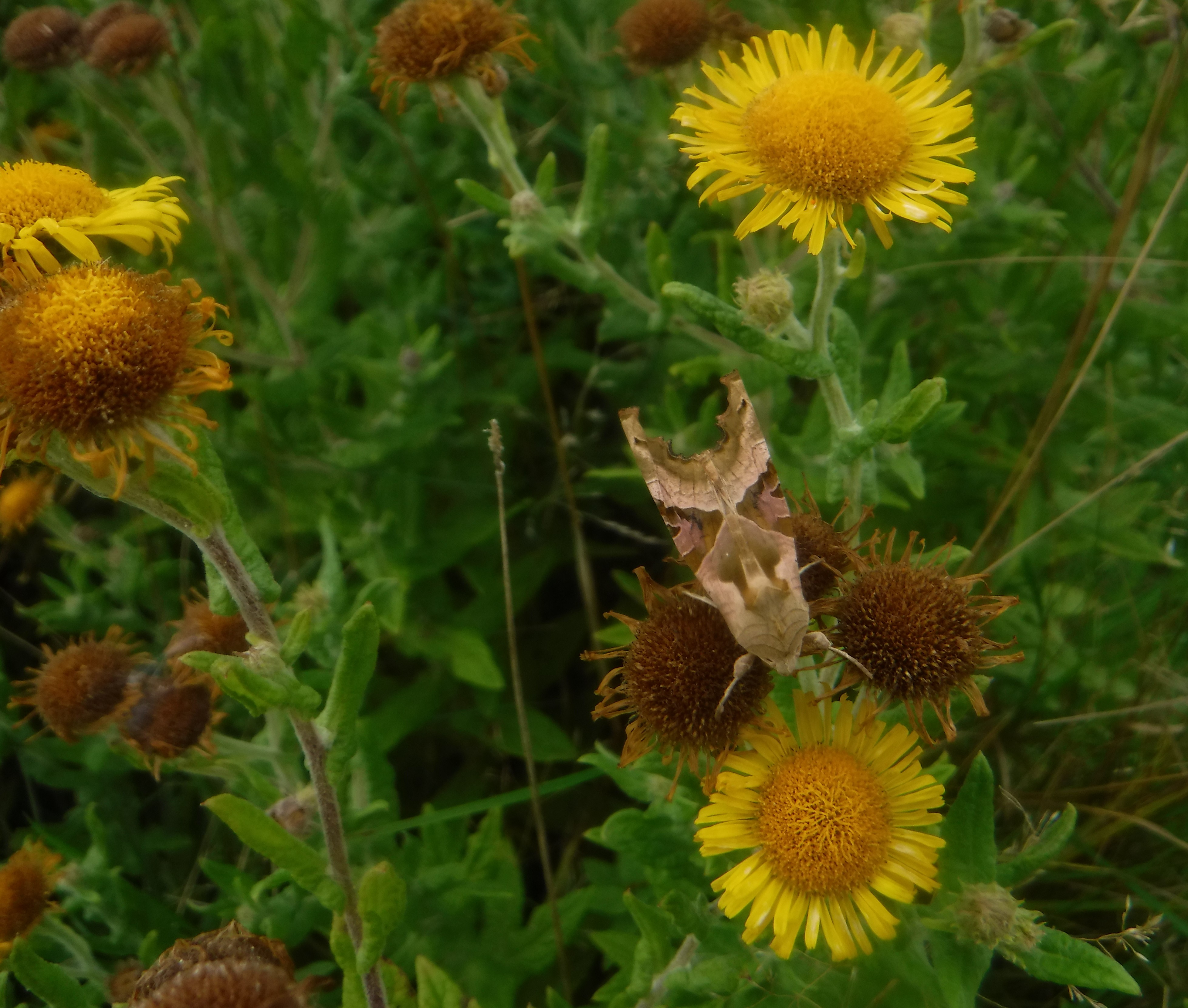
Total monthly rainfall: 54 millimetres. Maximum daily rainfall: 13.5 millimetres (2nd August).
There were 10 days when measurable rain fell, and 19 days when cloud-cover was 100% for at least part of the day. Maximum temperature on the warmest days was 23C on August 15th and 25th. Maximum temperature on the coldest days was 18C on August 16th, 17th, and 19th.
The wind blew from a Northeast or northwest direction for 15 days of the month and was Force 5 or over for 12 days. These were unsuitable conditions for butterflies, moths, and dragonflies to put in an appearance at the height of summer.
The first wildflower to bloom this month was the teasel on August 2nd. We saw a a gipsywort on the 11th, and there were three St. John’s wort about 30 cm high, and new to our site on August 12th.
We began removing the seed-heads of bur-reed from the lakeside margins, before discovering an unusual white knapweed plant in the wildflower meadow on the 26th. Finally, we discovered some mature stone parsley on the 31st – the same day we removed the ragwort to prevent seeding and make it safe for grazing. This brings our wildflower tally to 64 species. Most wildflowers grew very tall and covered a lot of ground.
-
 Angel Shades moth
Angel Shades moth
Angel Shades moth
Angel Shades moth
-
 Dark form of Silver Y moth nigricans
Dark form of Silver Y moth nigricans
Dark form of Silver Y moth nigricans
Dark form of Silver Y moth nigricans
-
 St Johns Wort
St Johns Wort
St Johns Wort
St Johns Wort
-
 Teasle
Teasle
Teasle
Teasle
-
 White knapweed
White knapweed
White knapweed
White knapweed
https://www.kentfieldclub.org.uk/news/little-barton-farm-wildlife-notes/nature-notes-august-2021#sigProId03e21dbf3f
There have been only two wild fruits to ripen this month – the first blackberry on the 1st – far earlier than the bulk of this fruit, which is mostly small and late ripening – and elderflower, which began ripening on the 23rd, with many berries rather small in size.
Last month we somehow mis-counted our running total of butterfly species seen this year, which should have been 23. A very late sighting of two purple hairstreaks on August 24th now brings our total species to 24 – but we have not yet seen a clouded yellow.
We started our moth-sightings for the month with 21species. On the 22nd August we found an unusual dark form of the Silver Y moth, photographed by our grand-daughter Emily Fosbery. This variant form is called nigricans (with thanks to Keith Palmer for this information). On the 24th we spotted our first ever orange swift moth, and on the 31st an angle shades moth posed beautifully on fleabane for our second sighting – the previous being indoors on January 17th.
We have probably completed our dragonfly first-sightings without seeing a southern migrant hawker, but the unseasonably cloudy weather has reduced sightings on many days to just a few blue-tailed and white-legged damselflies.
August 30th produced a first sighting of a scorpion fly, and the start of a second brood of crane-fly.
We are not seeing as many migrating bird-species as we used to. The Canada geese left us on August 5th and have not returned as a flock. One returned on the 23rd, but vanished on the 28th. We still see mallard ducks, moorhens and the grey heron regularly.
We check 10 reptile shelters in rotation once a week, but are still finding only ants and slugs beneath.

